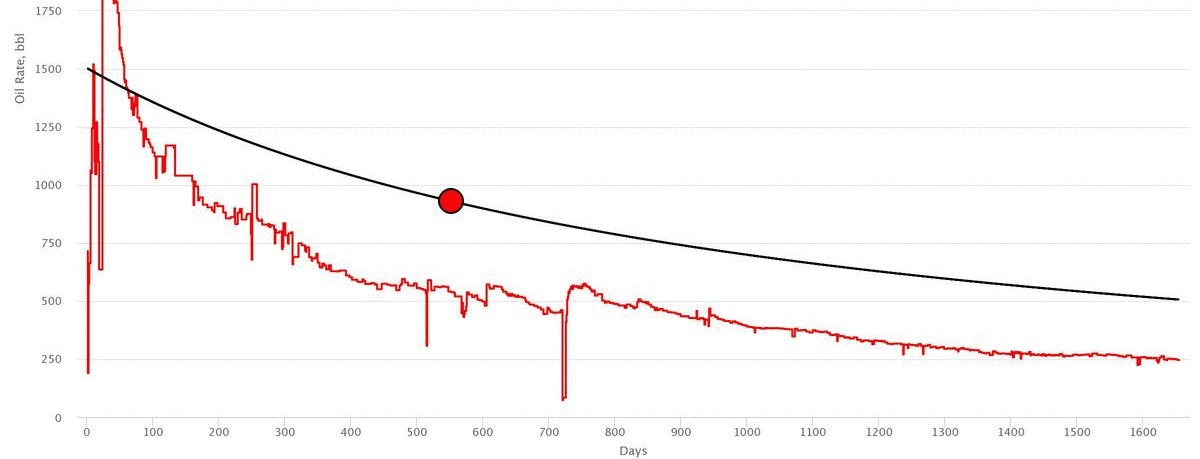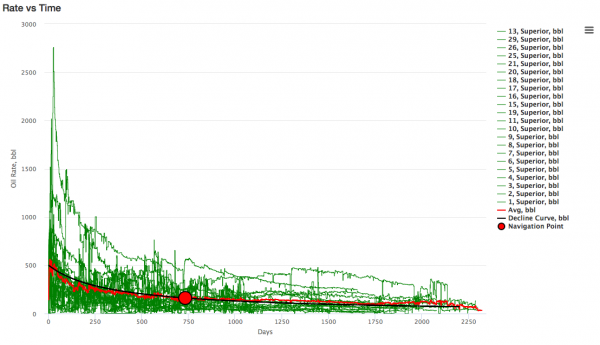Difference between revisions of "Decline Curve Analysis"
From wiki.pengtools.com
| Line 111: | Line 111: | ||
{{#seo: | {{#seo: | ||
| − | |title=Decline Curve Analysis | + | |title=Decline Curve Analysis |
|titlemode= replace | |titlemode= replace | ||
| − | |keywords=DCA, harmonic decline curve, Decline Curve Analysis, hyperbolic decline curve, exponential decline curve | + | |keywords=DCA, harmonic decline curve, Decline Curve Analysis, hyperbolic decline curve, exponential decline curve, Arps JJ |
| − | |description=Decline Curve Analysis is an empirical method for rate decline analysis and rate forecasting | + | |description=Decline Curve Analysis is an empirical method for rate decline analysis and rate forecasting forecasting published by Arps in 1945. |
}} | }} | ||
Latest revision as of 09:06, 6 December 2018
Contents
Brief
Decline Curve Analysis (DCA) is an empirical method for rate decline analysis and rate forecasting published by Arps in 1945 [1].
DCA is applied for Wells and Reservoirs production forecasting.
E&P Portal has DCA available as one of it's engineering tools.
Math & Physics
| Note [2] | Rate | Cumulative |
|---|---|---|
| Hyperbolic decline 0 < b < 1, b > 1 |
 |
 |
| Exponential decline b = 0 |
 |
 |
| Harmonic decline b = 1 |
 |
 |
Discussion
If one has a need to convert decline factor Di to the actual annual decline in %:
Workflow
- Upload the data required
- Open the DCA tool here
- For a single well
- Select a well in a filter
- Input the initial rate,

- Drag the Navigation Point to match the actual data
- Correct the model parameters manually if needed
- Check the difference in cumulative production of actual cure vs decline curve
- Check the Rate vs Cumulaive Plot in linear and log scale
- Save the decline curve model
- Move to the next well
- For a multiple wells
- Select the wells in the filter
- DCA tool will automatically normalize the wells data to zero time and then averages it
- Input the initial rate,

- Drag the Navigation Point to match the actual data
- Correct the model parameters manually if needed
- Check the difference in cumulative production of average cure vs decline curve
- Check the Rate vs Cumulaive Plot in linear and log scale
- Export the type curve if needed
Data required
Nomenclature
 = annual decline, %
= annual decline, % = decline curve parametr, dimensionless
= decline curve parametr, dimensionless = decline factor per time t, dimensionless
= decline factor per time t, dimensionless = initial rate, any rate units applies
= initial rate, any rate units applies = rate at time t, any rate units applies
= rate at time t, any rate units applies = cumulatve rate at time t, any rate units applies
= cumulatve rate at time t, any rate units applies = forecast time, days
= forecast time, days
References
- ↑ Arps, J. J. (1945). "Analysis of Decline Curves"
 . Transactions of the AIME. Society of Petroleum Engineers. 160 (01).
. Transactions of the AIME. Society of Petroleum Engineers. 160 (01).
- ↑ "KAPPA Dynamic Data Analysis (DDA) book".




